This was a stumper. I'd picked up a couple of white birch branches from the snow because something was obviously growing on them. I recognized the black bumpy eruptions as some kind of a pyrenomycete, or flask fungus, but many of those hard bumpy growths were either partially or fully covered with mysterious, minute, furry brown pellets. Insect eggs? A fungal parasite? I had no idea what they were.
 |
| Birch branches with a cup fungus growing on a pyrenomycete. |
I took the branches home and stuck one in water to see what would happen. While it was soaking I looked at a sample of the pyrenomycete under the microscope and found numerous wiener-shaped spores clustered together in its asci. This made it a Diatrypella.
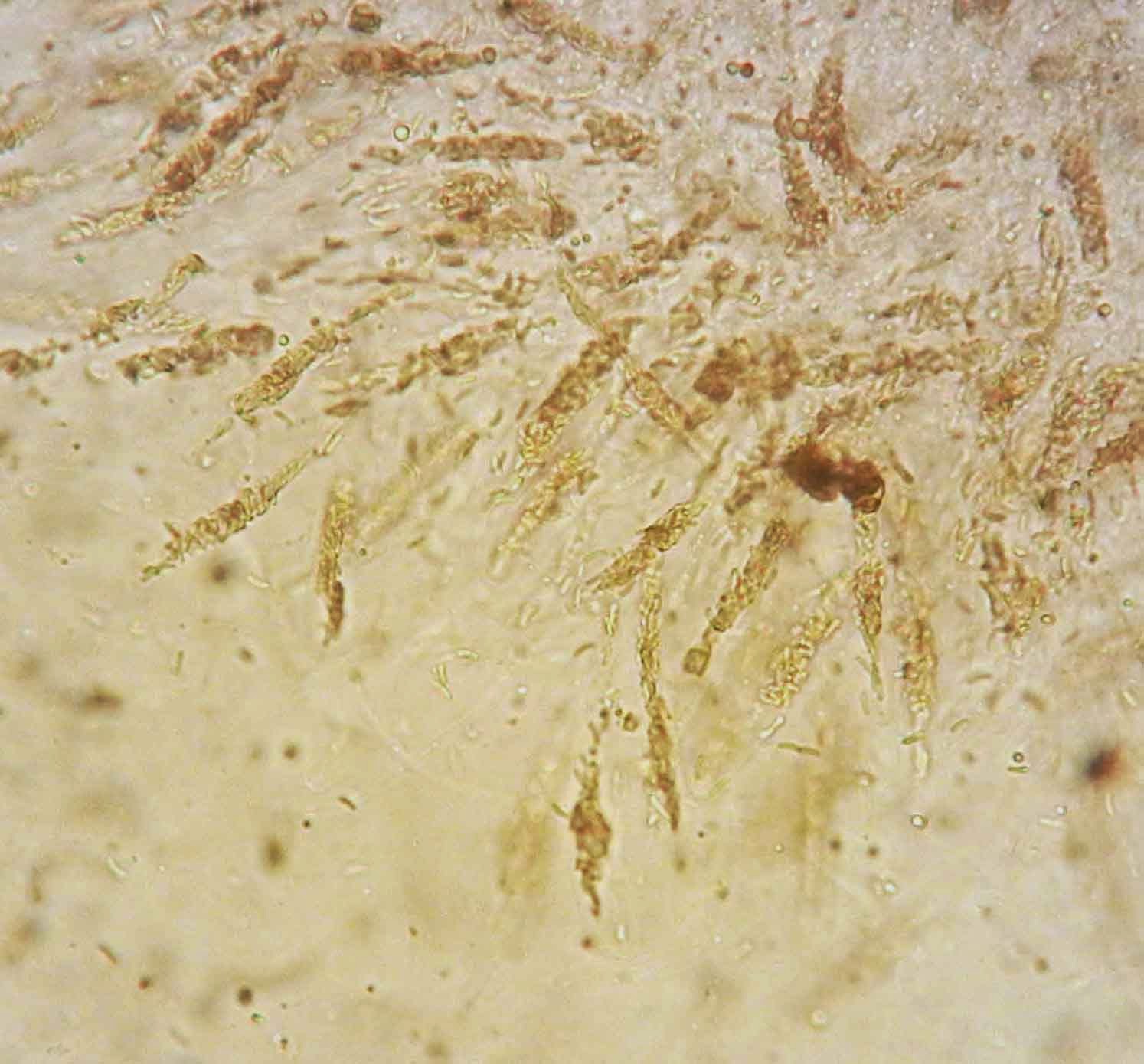 |
| Diatrypella asci produce numerous ascospores. |
There aren't a lot of Diatrypella—only 33 named species worldwide. Mine had a green layer inside, which, along with its spore dimensions and birch host made it Diatrypella betulina. One down.
I went back to the sample I'd been soaking. The tiny brown knobs had opened into tiny, shallow brown cups, creamy smooth on the inside, and hairy on the outside.
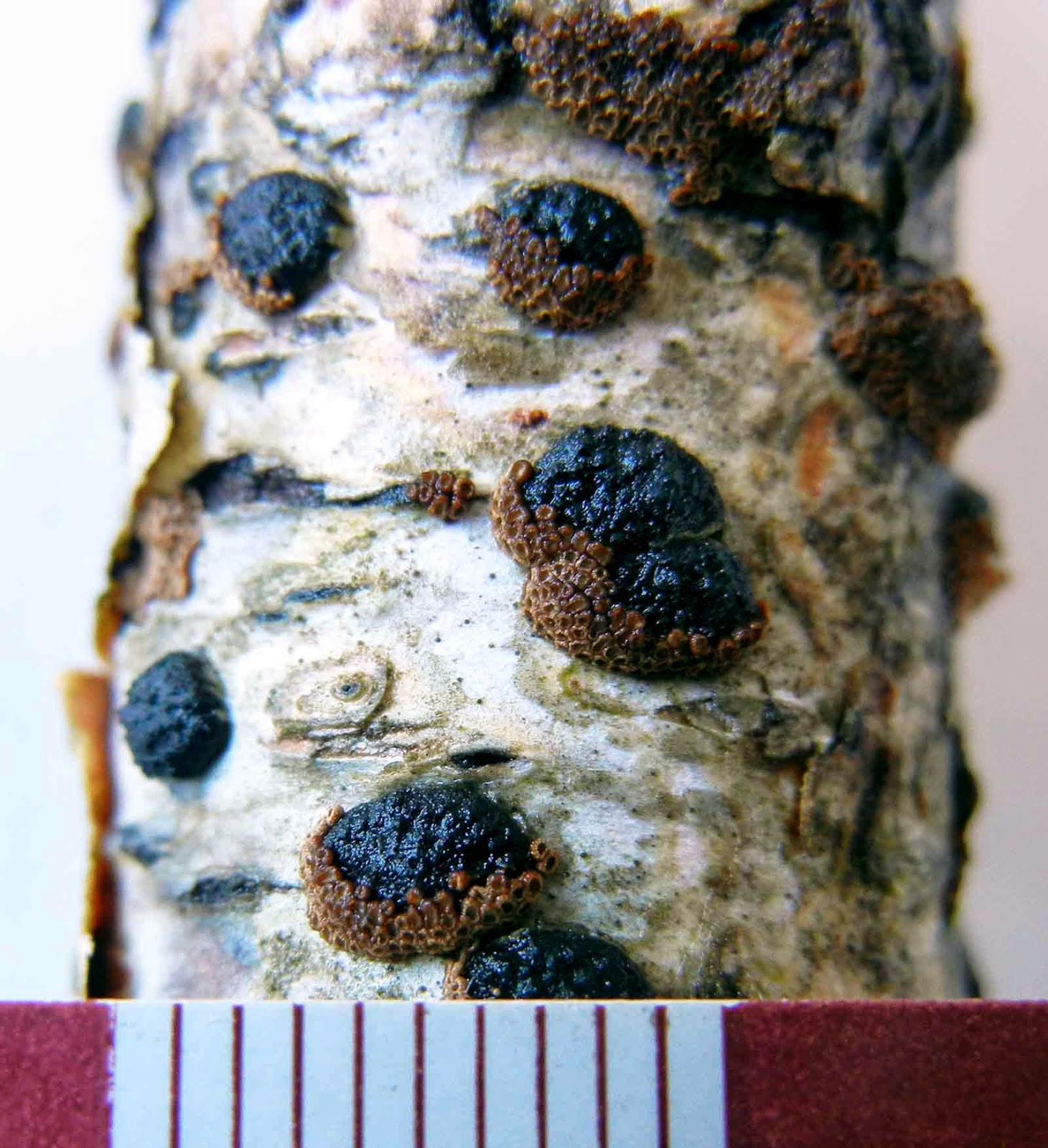 |
| Water made the hairy knobs open into shallow cups. |
Most cup fungi are ascomycetes and, like the Diatrypella, produce their spores in asci. But when I put a thin slice of one of the cups under the microscope I didn't find asci, I found basidia instead. This made identification easier since there are way fewer cup basidiomycete possibilities to choose from than if I'd found a hairy ascomycete.
The spores were like little bratwursts, and some of the cups' outer hairs had bulbous transparent ends. Merismodes confusa (Cyphellopsis confusa), aka Merismodes fasciculata, which is known to grow on Betula, is the closest fit.
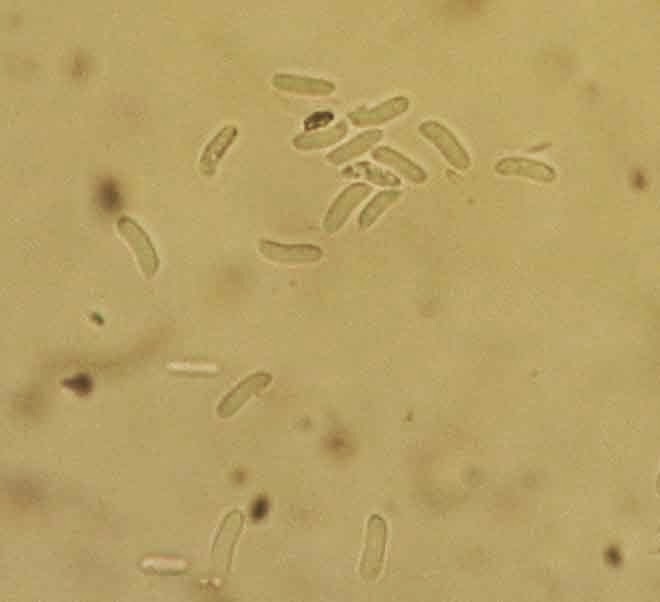 |
| Merismodes spores |
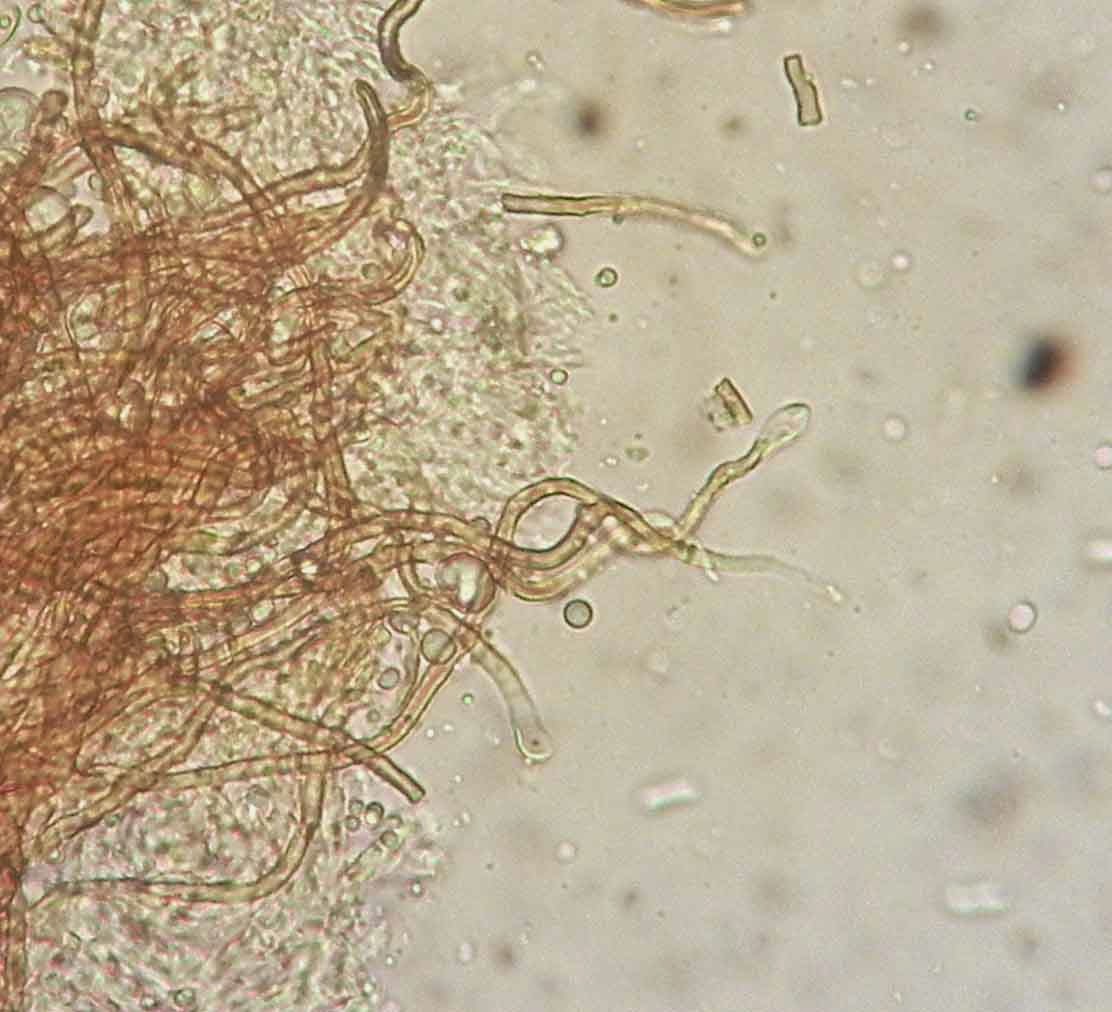 |
| The tips of Merismodes confusa can be bulbous and transparent. |
Merismodes species are known to grow on dead wood in the crowns of trees, and several species not only colonize the stroma of old pyrenomyces, but are known to be most profuse in winter. Referring specifically to Merismodes anomala, which has tubbier spores, Andrus Voitk suggests that it probably requires "dead substrate attachment to living tree tissue." Perhaps that applies to M. confusus/fasciculata as well.
Reference:
Vasilyeva, L.N. and Stephenson, S.L.
(2005). Pyrenomycetes of the Great Smoky Mountains
National Park. II. Cryptovalsa Ces. et De Not. and Diatrypella (Ces. et De Not.) Nitschke
(Diatrypaceae ). Fungal
Diversity 19: 189-200.
Bocconea 5: 839-844.1997
M. B. Ellis, J.P. Ellis, Fungi without Gills (Hymenomycetes and Gasteromycetes): An identification handbook...
Springer,
1990
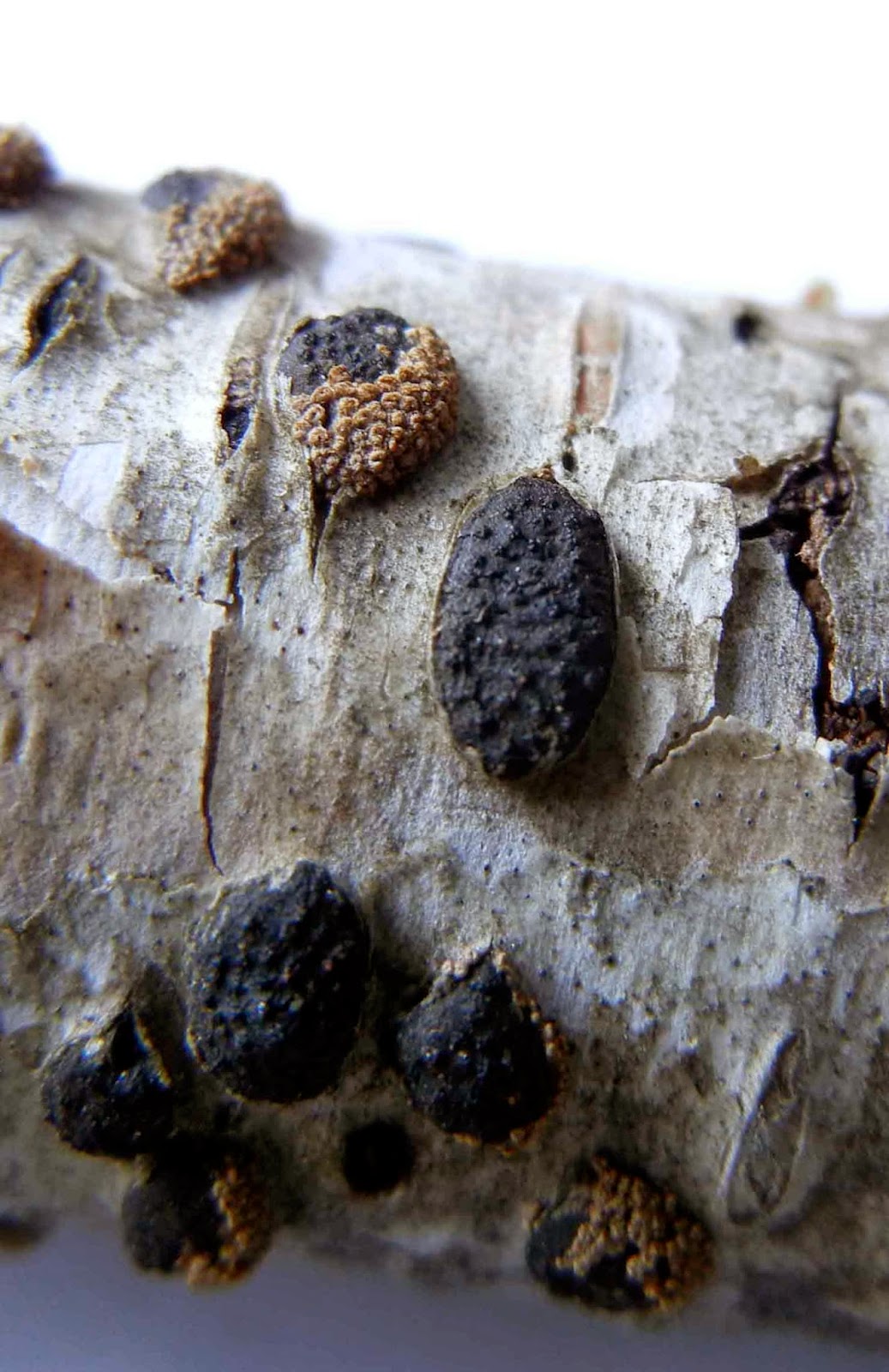
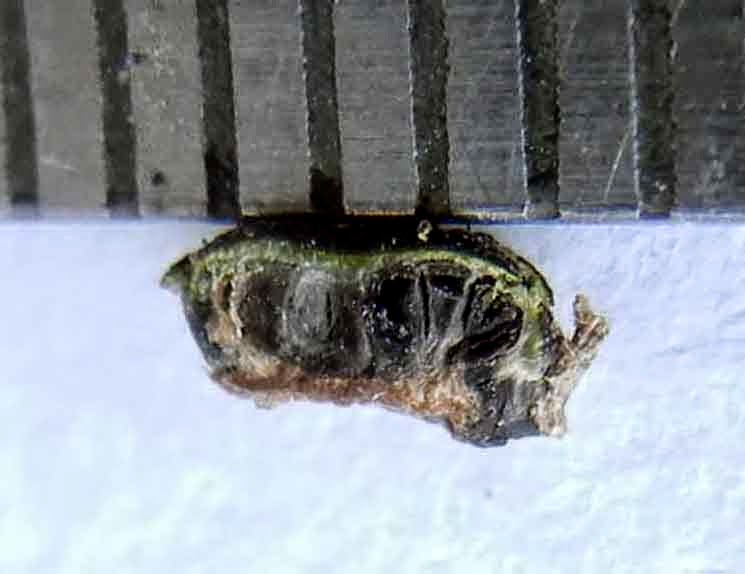
No comments:
Post a Comment